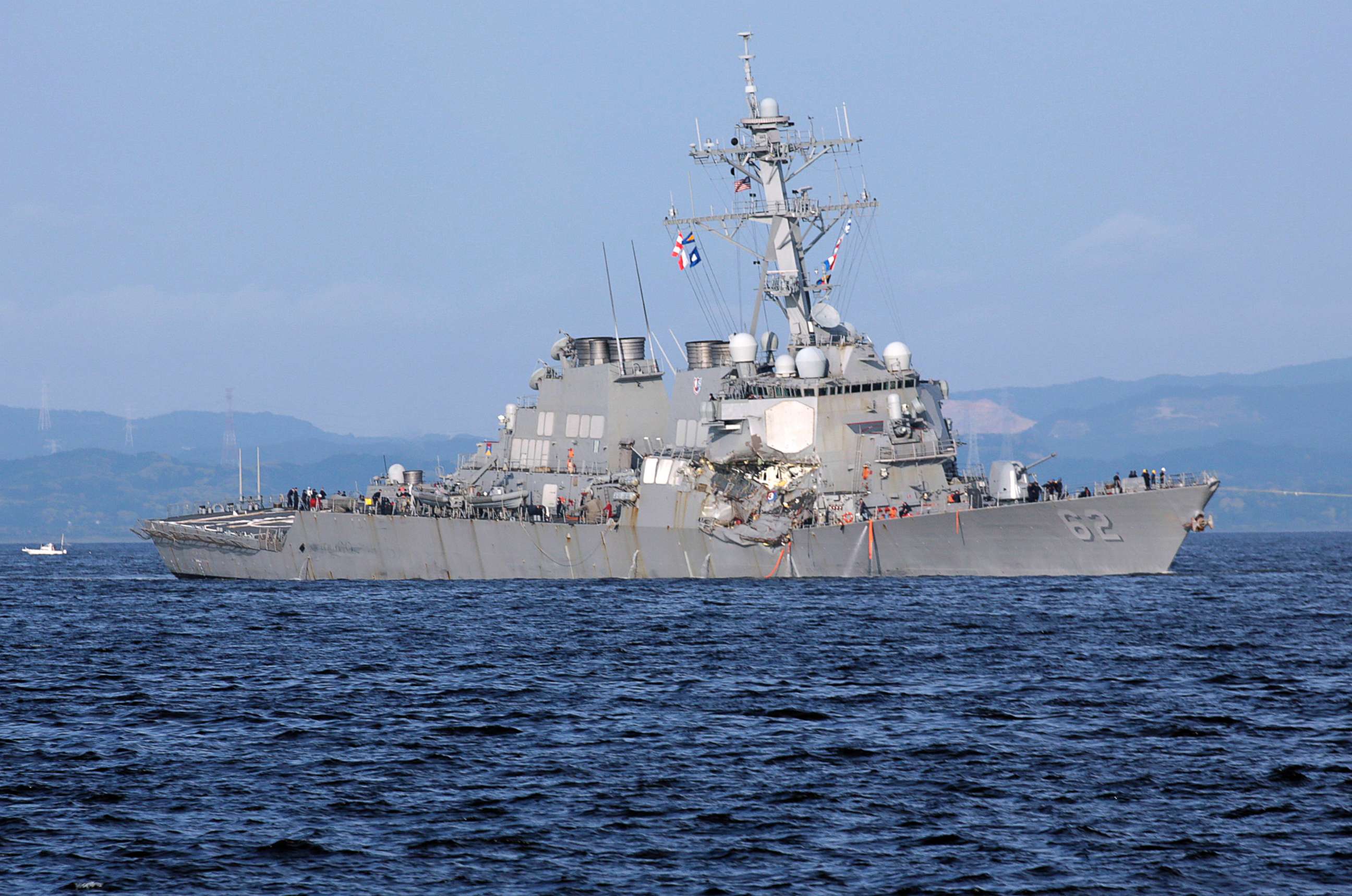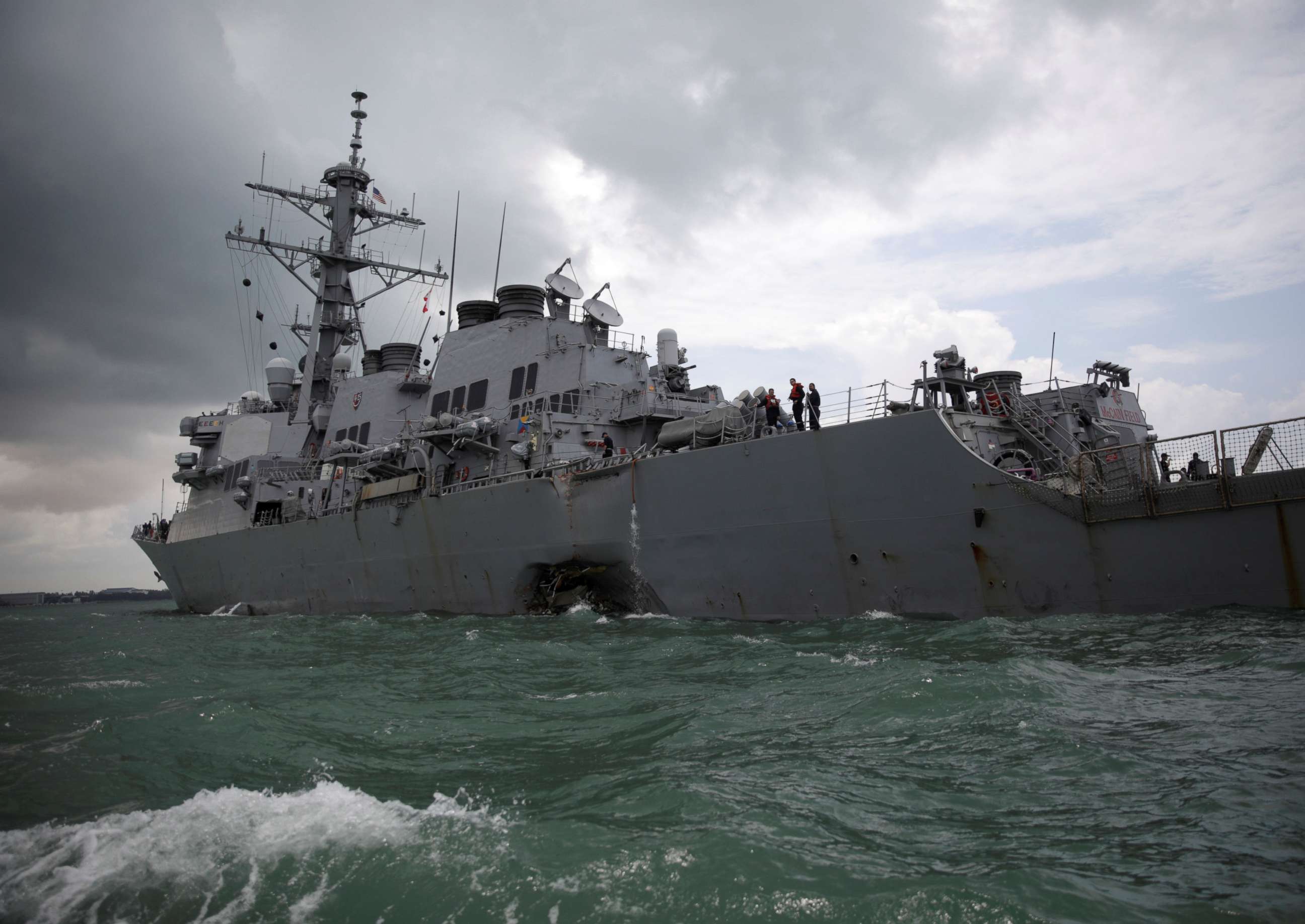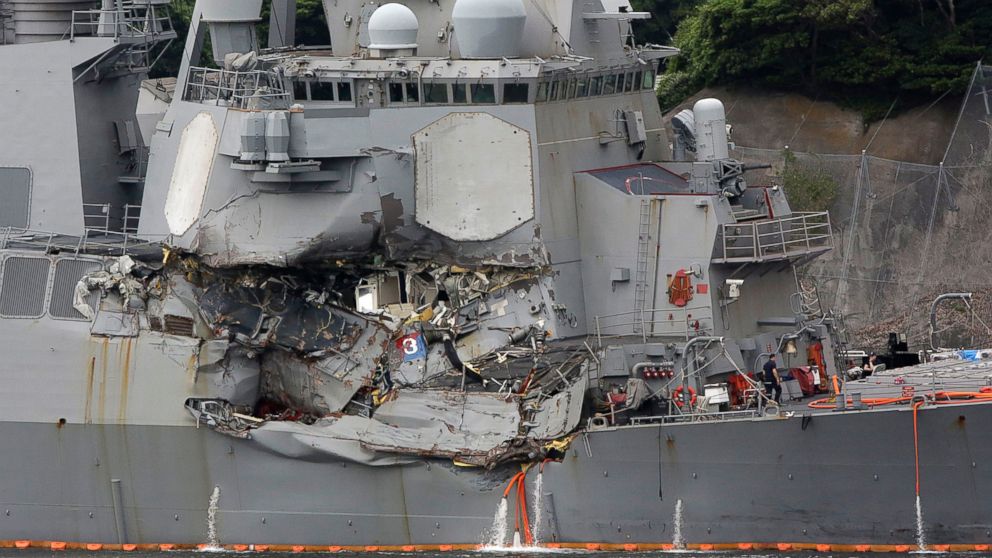Scathing report blames crew errors for deadly Navy collisions
— -- Poor decisions and lax standards made by the crews of the USS Fitzgerald and the USS John S. McCain contributed to the deadly collisions last summer that killed 17 sailors, according to a new Navy investigation.
"The collisions were avoidable," said Adm. John Richardson, the chief of naval operations, in the executive summary to the report.
"Both of these accidents were preventable and the respective investigations found multiple failures by watchstanders that contributed to the incidents," he added in a statement accompanying the report's release. "We must do better."
On June 17, the guided-missile destroyer USS Fitzgerald collided with a Philippine container ship off the coast of Japan, killing seven sailors and injuring three others.
On Aug. 21, the destroyer USS John S. McCain collided with an oil tanker just outside the port of Singapore. That collision killed 10 sailors and injured five others.

The rarity of the back-to-back collisions prompted the Navy to conduct a comprehensive review of its operations worldwide. The top leadership of both ships were subsequently relieved of their commands.
"We are a Navy that learns from mistakes and the Navy is firmly committed to doing everything possible to prevent an accident like this from happening again," said Richardson. "We must never allow an accident like this to take the lives of such magnificent young sailors and inflict such painful grief on their families and the nation."
The Navy investigation found that the "watch teams" on the Fitzgerald's bridge failed to carry out basic Navy safety and navigation procedures, and they "failed to adhere to well-established protocols put in place to prevent collisions," said the Navy statement.
That included not filing an appropriate scheme for transiting through the busy waterways outside of Tokyo and not notifying the ship's commanding officer, Cmdr. Bryce Benson, when it approached nearby ships as required by Navy regulations.
In the early morning hours of June 17, the Fitzgerald was traveling at a speed of 20 knots about 50 miles south of Tokyo Bay when it began to sail past commercial vessels. Contrary to his standing order, Benson was not notified on multiple occasions when the Fitzgerald came within three nautical miles of several of those ships.
At one point the Fitzgerald crossed the bow of one of those ships at a distance of 650 yards.
Twenty minutes before the collision with the ACX Crystal, the watchstanders on the Fitzgerald's bridge detected the container ship was going to cross its path.
Meanwhile, the team manning the sophisticated radars in the Combat Information Center "did not communicate effectively or share information" with the team on the bridge.
The team on the bridge mistakenly calculated that the Crystal would pass the destroyer at a distance of 1,500 yards. The officer of the deck maintained the destroyer's speed and did not order a course correction until it was too late.
Benson was asleep in his quarters when the deadly collision occurred at 1:30 a.m. local time, according to the investigation.
Benson was one of the three sailors injured in the collision and had to be rescued from his quarters, which were completely destroyed in the collision. Rescuers used sledgehammers to get into his quarters and fashioned a harness to get him out after he was found "hanging from the side of the ship."
The McCain collision was also deemed to have been avoidable and "resulted primarily from complacency, overconfidence and lack of procedural compliance," the statement found.

"A major contributing factor to the collision was sub-standard level of knowledge regarding the operation of the ship control console," particularly regarding the ship's steering system prior to the collision, according to the statement.
Transiting through the busy shipping lane outside of Singapore the ship's commanding officer, Cmdr. Alfredo Sanchez, had noticed that the ship's helmsman was having a tough time steering and adjusting the throttles for speed control.
Sanchez ordered that those duties be split with another watchstander next to the helmsman, known as the "lee helm," who would take over the thrust controls. But his order was misunderstood and both steering and thrust controls were mistakenly transferred to the lee helmsman.
Not knowing that steering had also been transferred to the lee helm, the report said, the helmsman "perceived a loss of steering," though that was never the case.
Meanwhile, the corrective actions taken on the bridge to that perceived loss of steering, including a decrease in speed, steered the destroyer into the path of three commercial ships, including the Alnic.
The bridge team "lost situational awareness." Steering was eventually regained, but by that time, the destroyer had collided with the Alnic's bow.
The troubles on the bridge were compounded by an earlier decision by Sanchez to delay the additional manning of key positions needed to transit busy waterways, including the placement of a master helmsman on the bridge. Sanchez had decided to delay the "sea and anchor" team's arrival at those stations to give them extra rest despite opposition by other officers of his leadership team.
Manning by the "sea and anchor" detail could have corrected the mistakes made by the watch team on the bridge, the investigation determined.
In a failure of basic seamanship rules, the bridge teams on neither destroyer sounded five blasts from their horns to warn the commercial vessels in their path about a collision. And neither bridge team attempted to make radio contact with the vessels to warn of a collision, either.
"If John S McCain had sounded at five short blasts or made Bridge-to-Bridge VHF hails or notifications in a timely manner, then it is possible that a collision might not have occurred," the report said.
But neither of the commercial ships made the same efforts, either.




